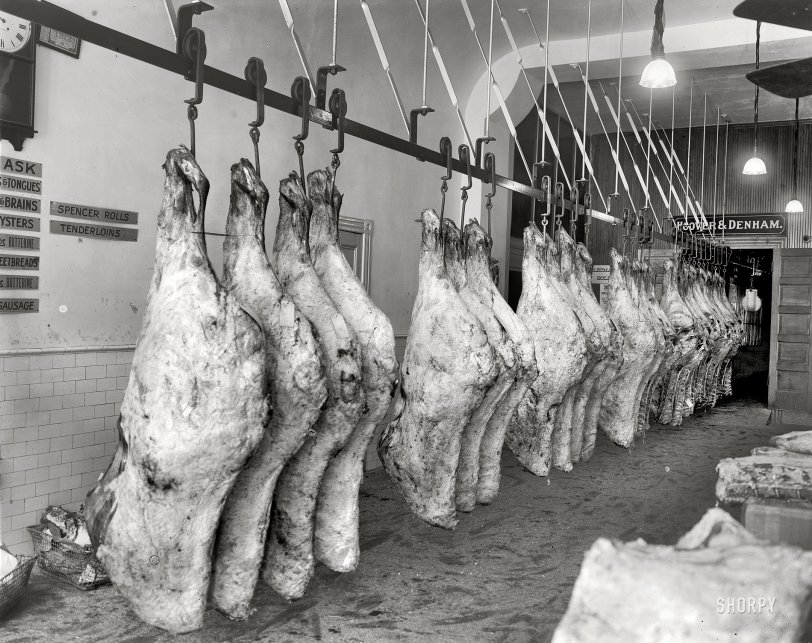


Framed or unframed, desk size to sofa size, printed by us in Arizona and Alabama since 2007. Explore now.
Shorpy is funded by you. Patreon contributors get an ad-free experience.
Learn more.

- What a headache!
- Baldwin 62303
- Baldwin VO-1000
- Cold
- No expense spared
- Tough Guys
- Lost in Toyland
- And without gloves
- If I were a blindfolded time traveler
- Smoke Consumer Also Cooks
- Oh that stove!
- Possibly still there?
- What?!?
- $100 Reward
- Freeze Frame
- Texas Flyer wanted
- Just a Year Too Soon
- WWII -- Replacing men with women at the railroad crossing.
- Yes, Icing
- You kids drive me nuts!
- NOT An Easy Job
- I wonder
- Just add window boxes
- Icing Platform?
- Indiana Harbor Belt abides
- Freezing haze
- Corrections (for those who care)
- C&NW at Nelson
- Fallen Flags
- A dangerous job made worse
Print Emporium
Ask About Our Brains: 1920

Washington, D.C., circa 1920. "Hoover & Denham." Which is which, the caption doesn't say. National Photo Company Collection glass negative. View full size.
Butterine
was another name for margarine or oleomargarine, made from animal fats and offal.
The dairy industry was naturally against it and various fights in legislatures were held trying to force butterine to be colored pink (pink being associated with sick cows' milk) or be marked "adulterated butter" and not served to unsuspecting diners without proper warning.
Butterine
Butterine is an old trade name for margarine, often made in those days using milk or beef tallow.
Butterine
It's a mixture of animal fat and vegetable fat. Kind of like Lite Butter or Shedd's Spread.
Looks like well aged beef.
I'd sure like to have a chunk of one of those to throw on the barby.
1913
What is that certificate in the frame? It has a date of 1913. And what look like tear-offs on the side.

Hanging on Old Louisiana
Hoover & Denham was a meat distribution firm operating in the 900 block of Louisiana (now Indiana) Avenue NW.
We've seen this neighborhood - a hub of meat and produce distribution for decades - several times before on Shorpy:
https://www.shorpy.com/node/6379
https://www.shorpy.com/node/4607
BBQ
There was a fire at Hoover & Denham in July 1918.

Brainless
Calf brains used to be a delicacy in the South when I was a kid. My grandmother would buy them at the A&P to scramble with eggs. This was in the late 1950s, early '60s. We still can get pig tail, pig feet, tripe and smelt -- but, sadly, no brains.
Twice Tasty
Does anyone know what butterine is? It must be good, it's listed twice on the sign.
Supermarket 101
Hanging is a hind, short for hindquarter. Basic cuts from a hind include round steak, sirloin tip, porterhouse, T-bone, and tenderloin.
Hinds typically weigh 160-180 pounds.
On the left in the middle, you see the exposed chime bone, aka backbone. The horizontal line in the middle of the chime bone is the exposed spinal cord.
The oyster is not what you think, it's actually a small cut from inside the pelvic bone and about the size and shape of a large oyster.
I have no idea what butterine is.
























On Shorpy:
Today’s Top 5